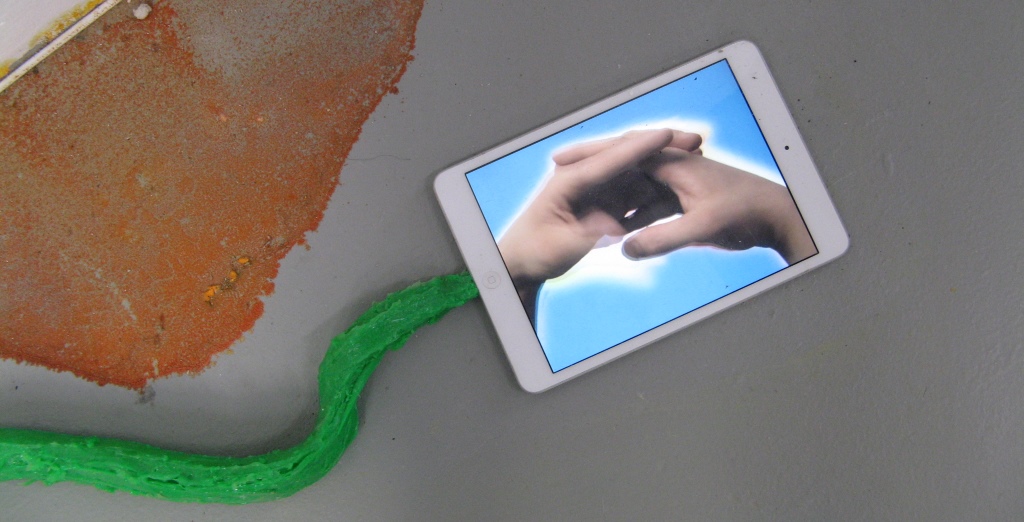
Brave New World RijksakademieOPEN
Which syndrome is it that makes one nauseous in front of a painting? Clearly, no such thing at the RijksakademieOPEN 2015. Ascending the narrow iron staircases and ambling around the glass corridors outlooking the inner courtyard of this ever so strange building, there is not a dull moment in sight.
Starting off with Adrian Melis and belit sa?, who both show videowork in which what is shown does not reflect what is said. Melis’ video tells the tale of a german tourist visiting Greece whose suitcase got left behind in Düsseldorf by Air Berlin with all of her belongings in it. No mascara, no sandals and no bikini ! Staccato footage of demonstrations and violence on the streets of Greece following the economic meltdown is shown while she gleefully chatters away about the tragedy of not having any dental floss. Sa? slowly unravels the impact of sorrow through conversations and shots of images of death on a phone in My camera seems to recognize people, a video poem in three parts. It unfolds itself with patience and sensible determination, as all three screens in the room repeat the same three minute video.
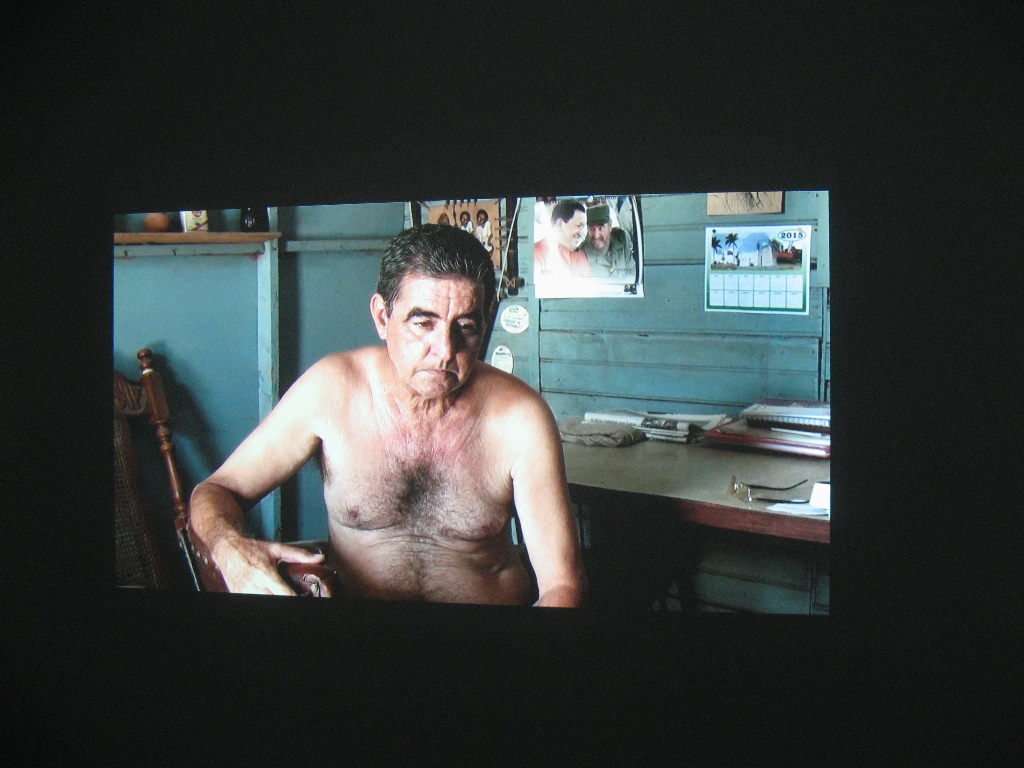
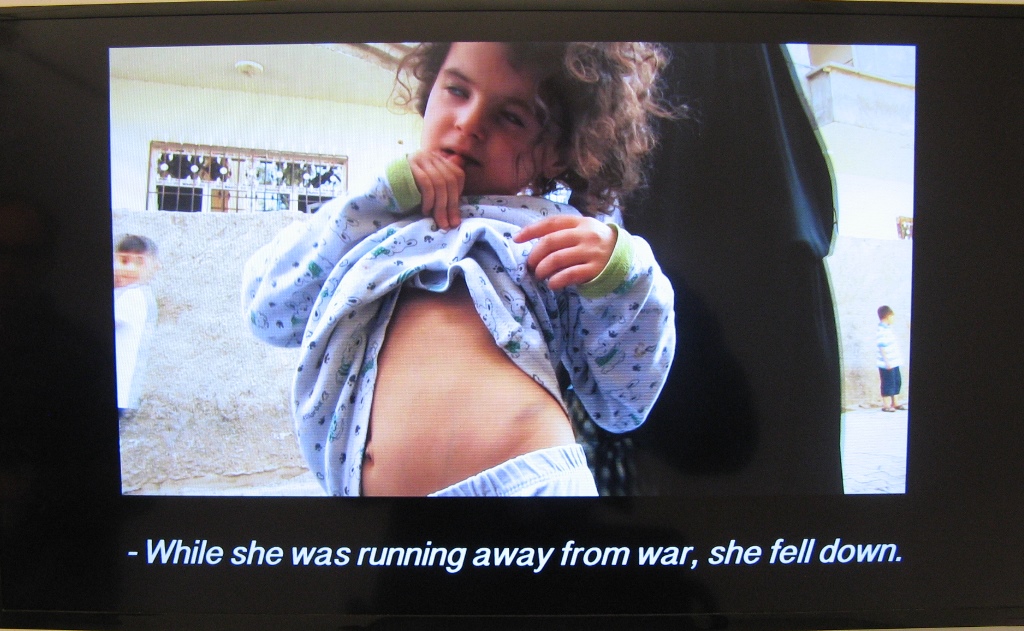

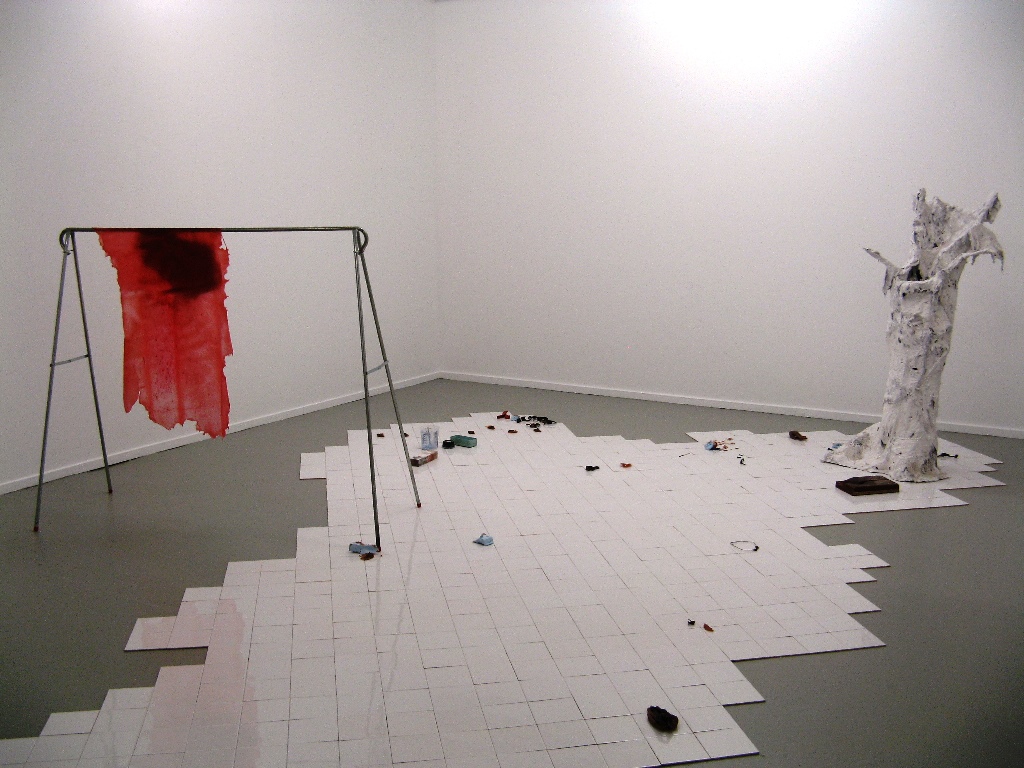
Violence, and the way it affects body and mind is also shown in Lisa Reitmeiers beautifully complex presentation. The thinly stretched red latex sheets lavishly draped over a metal rack and chair contrast the rigorously laid out surface of cold white shiny tiles on which wax hands, dried and blackened banana peels and roughly torn chunks of beef jerky rest, defeated.
The razor sharp presentation by Christine Moldrickx echoes this ruthless brutality with weapons that are cheekily hidden and alienated in the walls of her space. A drill bit, a knife and a piece of jagged glass : so small, yet so effective. Moving even further into the danger zone, Mercedes Azpilicueta explores the boundaries of the contorted voice and body through video. Clad in fierce adidas armour, she is exposed covering all walls as she writhes, sighs and moans onscreen. The manipulative strenght of her hands as she clasps and claps them is provocative and slightly uncomfortable. What does the body want? Dit-Cilinn revels in the sensuality of the folded flesh and the fetishization of bondage like shapes and objects. Sturdy wood, pliable metal and soft latex form amalgams which despite the sober formation does not lose any of its erotic appeal. A female bust perched atop a stick, forms the introductory view to Eva Spierenburg’s roomsize installation featuring all kinds of bizarre paintings, sculptures and oddball combinations in muddled colours, as a sense of bewilderment lingers. The plaster corset Eva Spierenburg smashes to pieces in her video, signals the collapsing of all that is expected of women, in the same way Aimée Zito Lema proves the female body to be malleable in both a video of hesitant ballerina pliés projected on a wall and a series of dislodged legs, feet and butts encased with roughly appended clay, the push and pull of fingers still visible, placed on wooden tables.

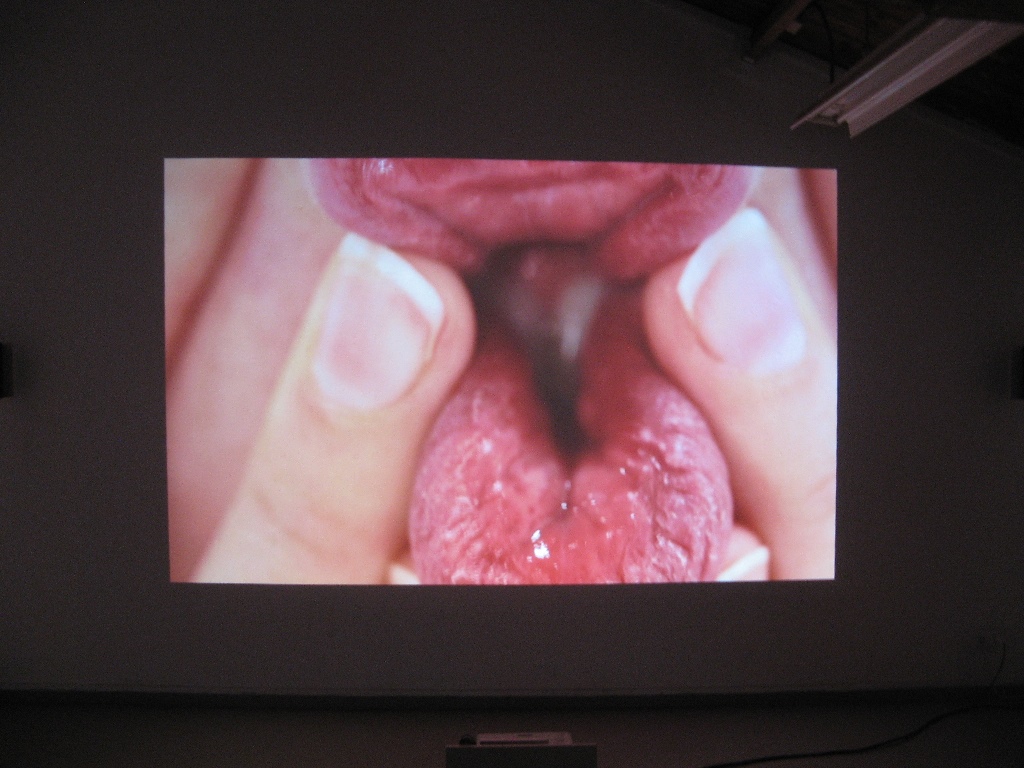
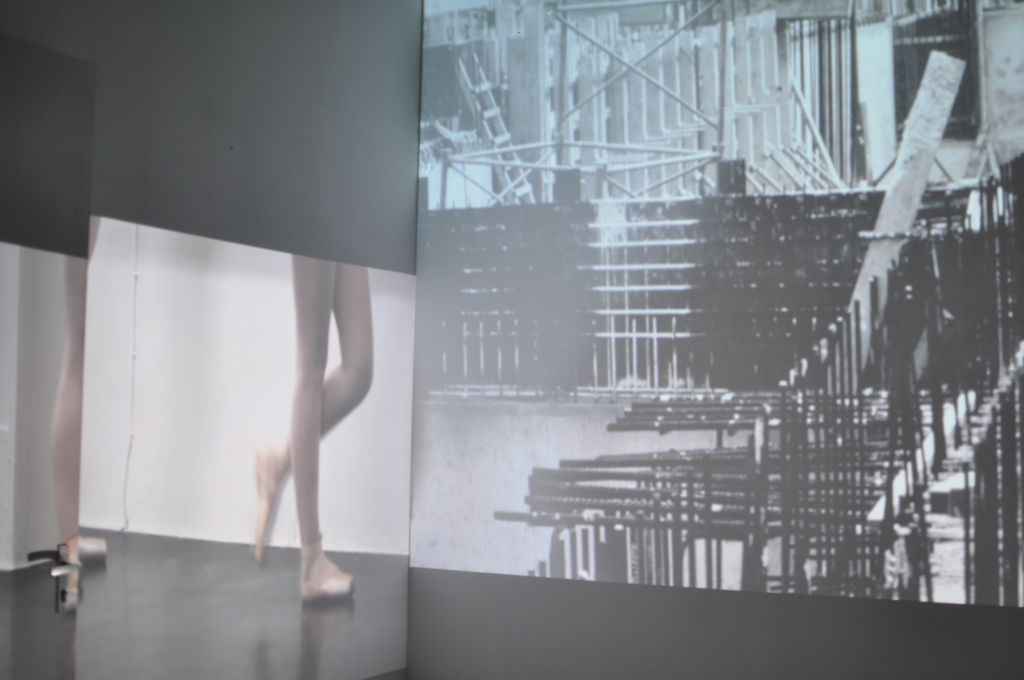

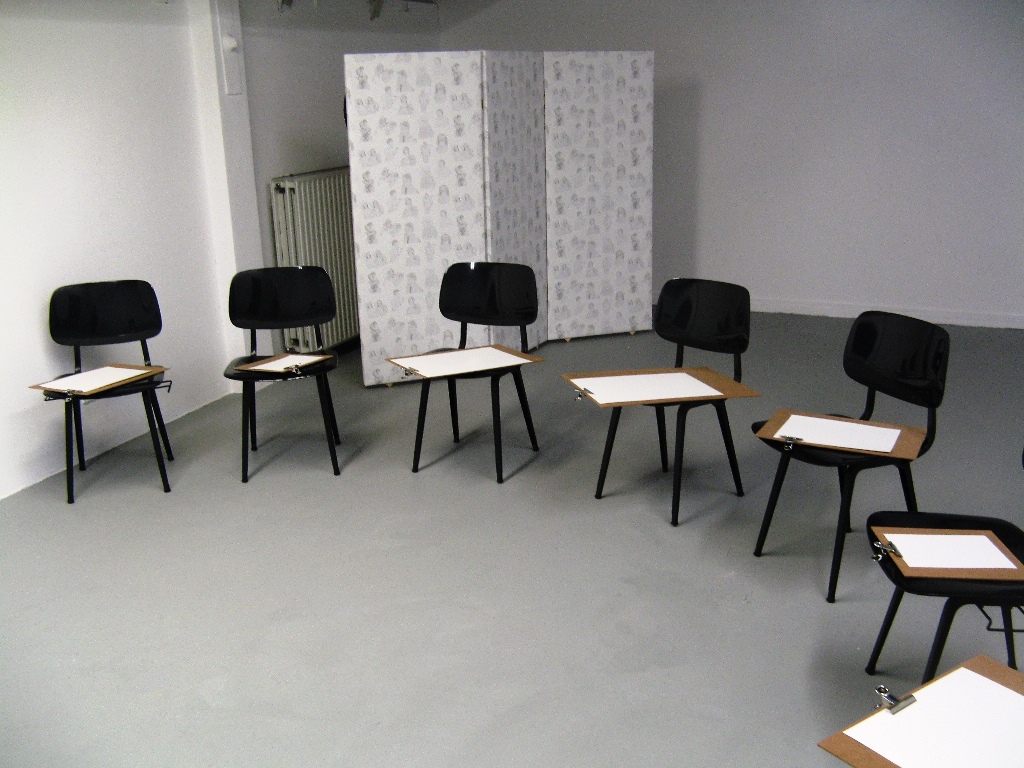
Juliaan Andeweg ironically explores the very male oriented myth of the painter in a psychedelic explosion of spilled paint. Geode encrusted trainers and plastic bottles filled with purple paint allude not so much to Hermes as to a lone ranger, as Andeweg makes his case for the relevance of nostalgia. Spilling liquid, and the context in which it happens is also a thing for Johann Arens, who made a myriad of disproportioned, undulating tripods, reaching for the skies along with a host of objects which reference the workforce, both in an office and outside of it. Compressed clay, coffee remnants and workmen’s gloves top off the first part of this presentation, which is nicely complemented by another room in which he supplants everyday office objects of the Actief Computer Centrum-a centre which provides computer lessons to all in Amsterdam-with his own sculptures inspired by enormous screens, where a play on proportions provide both a visual and a tactile surprise.
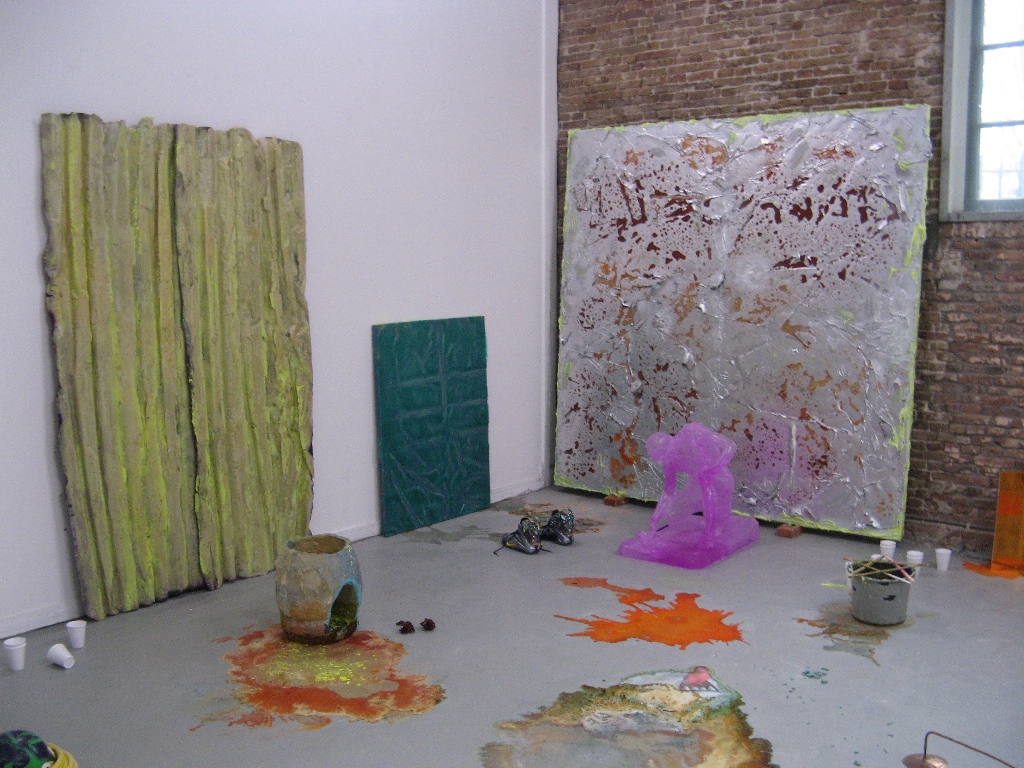
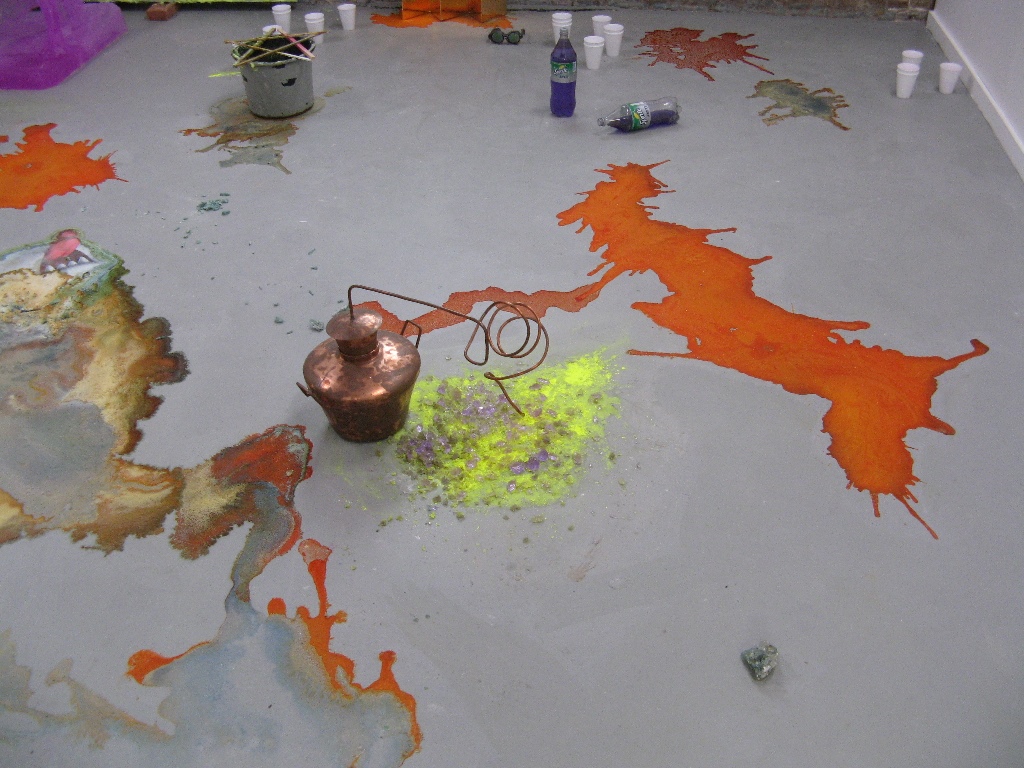

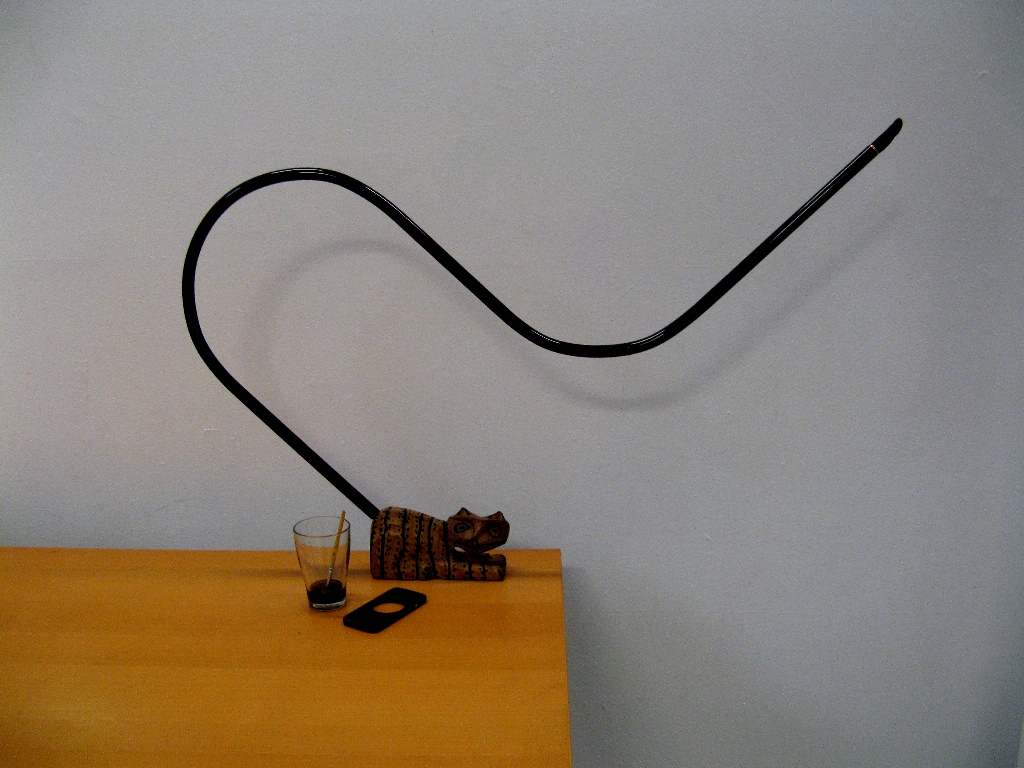
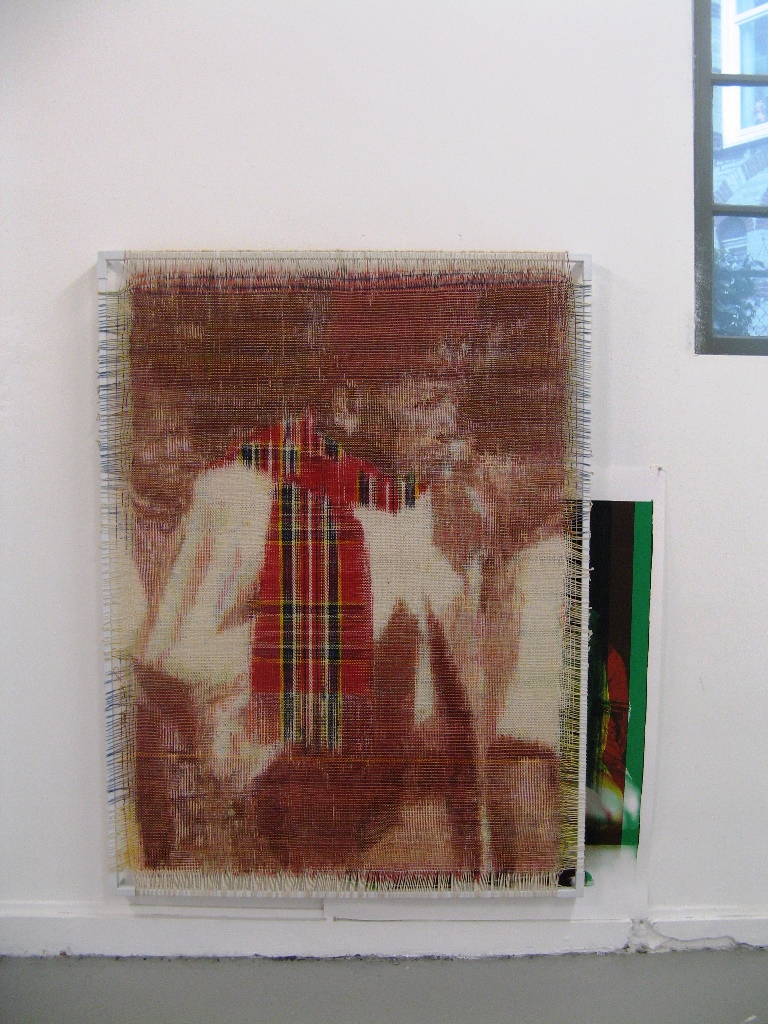
This tactile aspect is also very much present in Koen Doodeman’s three works, in a very organic way, where intricate works made of thick coloured wool threads hang over paintings featuring political aesthetics. The organic matter is best represented at Robbert Weide’s presentation, a crackling and rustling array of little bits and bobs which are masterfully arranged and accompanied by a grass mat swept over by fog which slowly lifts iself in and out of a large tub. The discreet noise this makes almost makes me miss the small plastic container placed beneath it, in which live crickets tumble over one another.

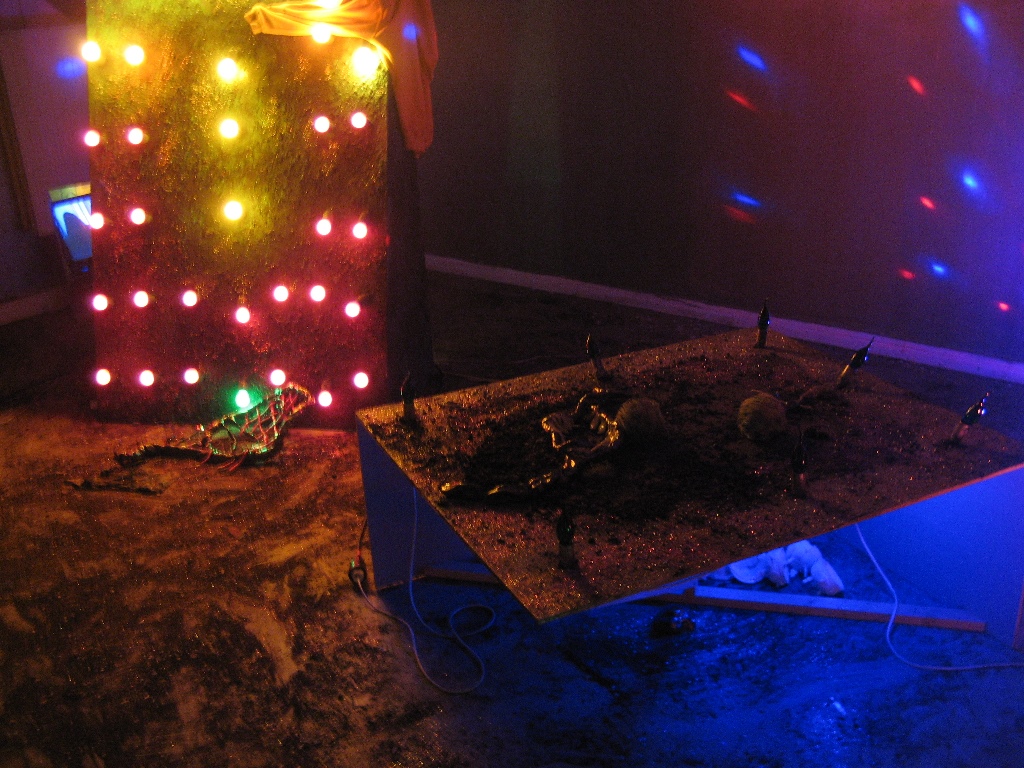
Sound and the effect it has, is used to its full potential throughout the Rijksakademie. It ranges from a subtle exploration of the interplay between broken voices and incomplete entities from Young Eun Kim to the wailing soundtrack of Geo Wyeth’s grim, post-apocalyptic darkroom. The power of the spoken word has been thoroughly researched by both Thierry Oussou, who translated part of Benin’s oral history onto paper (and french and english) and Nickel van Duijvenboden as he delves into all that is not to be seen, bringing his excellent reading performance at de Appel, held in the context of gerlach en koop, back to mind.
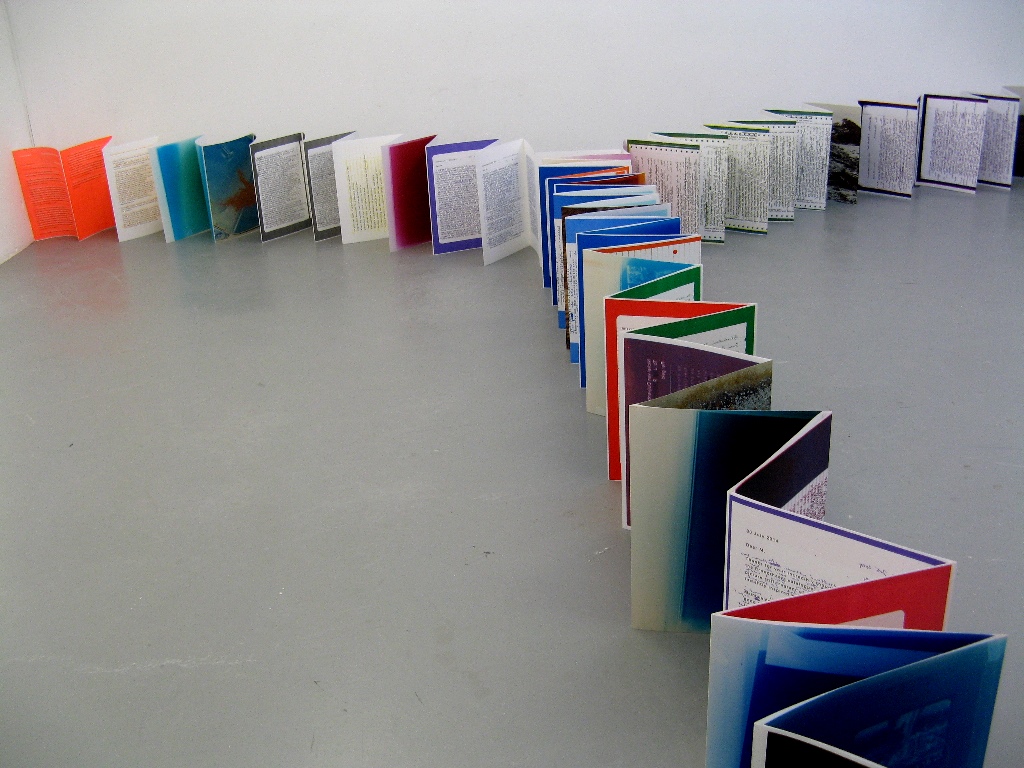
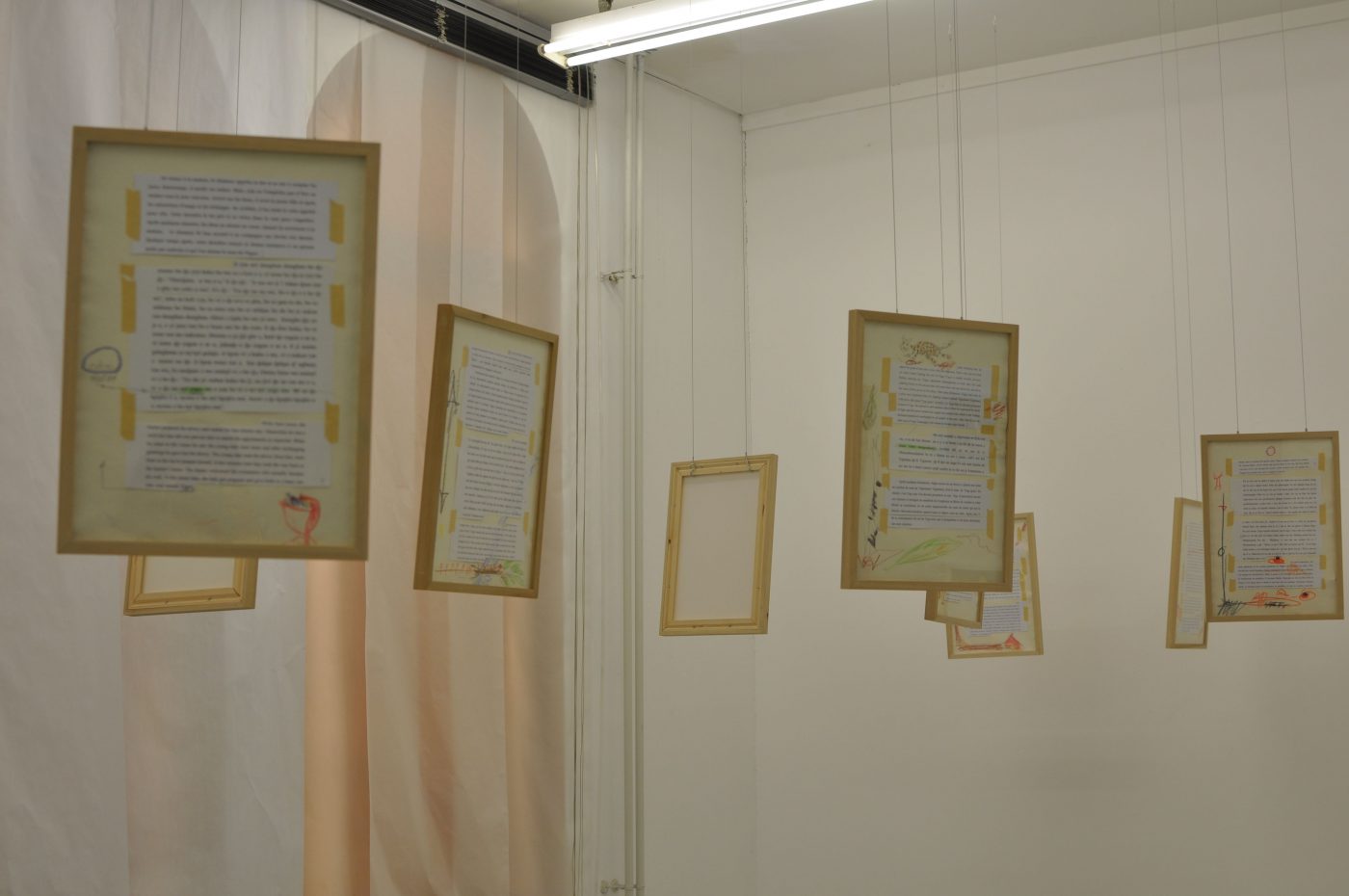
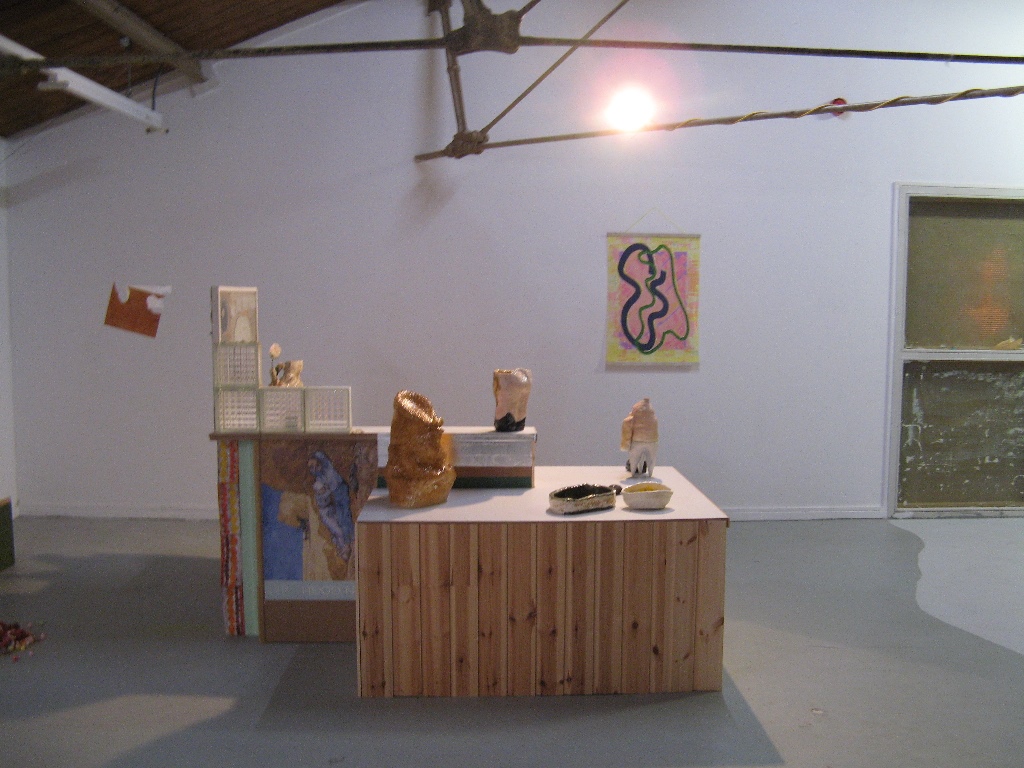
And then, last but certainly not least, the presentations that were impossible to do justice with a small camera. Jay Tan’s enormous room filled to the brim with a mad medley of abandoned arts and crafts units, 1980s style living rooms and the corners of a pantry no one wishes to see, or have, for that matter. Pauline Curnier Jardin’s exhilarating video and set of a performance executed for Performa ’15. Kareem Lotfy’s ode to the Rijksakademie’s collection, trapped behind pixelated glass attended to by some pink neons to provide some solace. In an attempt to capture all that is new, exciting and worth your while, I may have gone overboard describing what there is to see. This year’s RijksakademieOPEN is a very welcome burst of energy infusing an otherwise bleak artistic future in the Netherlands. Do brave the icy rains this weekend, and see for yourself.
RijkakademieOPEN, Amsterdam
28 & 29 November
Alix de Massiac
is editor at Metropolis M


